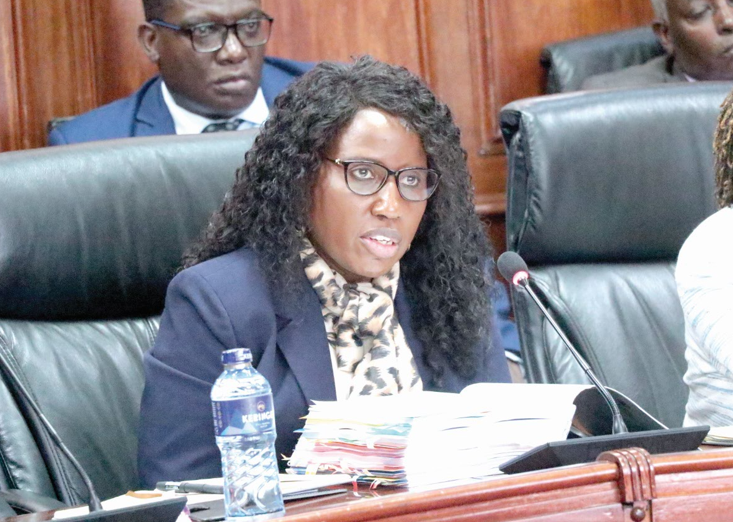Thousands stare at missing varsity places over funds
By Mercy.Mwai, May 29, 2024Thousands of students who sat the Kenya Certificate Secondary Education (KCSE) examination last year may not join universities after the government drastically slashed funding for tuition and upkeep loans.
Documents tabled before MPs shows that the Higher Education Loan Board (HELB) was allocated a paltry Sh2.4 billion to cater for the 21,512 students, meaning the remaining 101,122 students, representing 82.5 percent, will not be funded.
In their submissions before MPs, HELB regretted that the while in the Financial Year 2023/2024, it was allocated Sh31.89 billion for tuition and upkeep loans, this has been reduced to Sh 28.1 billion in the proposed estimates FY 2024/25 which can only be able to fund continuing students through loans for upkeep and tuition (Year 2 to Year 6).
Reads the document: “To fund Year 1 (KCSE 2023 Cohort) students through tuition and upkeep loans HELB will require Sh13.8 billion for 122,634 university students. The proposed allocation in the FY 2024/25 estimates is Sh 2.4 billion which leaves a funding gap of Sh11.4 billion. The proposed allocation in the FY 2024/25 estimates is Sh2.4 billion which leaves a funding gap of Sh 11.4 billion.”
Financing deficit
It adds: “Implications of Financial Year 2024/2025 Budget Proposals for HELB Loans under the New Funding Model. HELB has a financing deficit of Sh11.4 billion in the FY 2024/25 proposed estimates. With the available funding HELB can fund all continuing students but only 17.2% of the students who will be joining university in 2024. “
Also affected by the cuts in the 2024/2025 financial year are the continuing students as the National Treasury also reduced the budget for them by Sh16.25 billion from Sh34.1 billion allocated in the 2023/2024 financial year to Sh 17.85 billion translating to 30 percent.
Despite the reduction, the National Treasury however allocated Sh22 billion for scholarships for University students under the new funding model that has entered the second year of its implementation.
The funding will be used to cater for students who will be progressing to their second year of studies as well as the newly admitted students who are expected to join various universities later in September.
President William Ruto last year unveiled a new university and TVETs funding model aimed at primarily benefiting students from extremely poor backgrounds. In the current DUC model the government was paying 80 percent of the differentiated unit cost (DUC) while students were catering for the remaining 20 percent.
Principal Secretary at the State Department for Higher Education and Research Dr Beatrice Inyangala in her submissions before MPs regretted that four universities including Moi, Eldoret, Kabianga, and Nairobi have no allocation which implies that the continuing students in these universities (Year 3 to 6) will not be funded.
She regretted that this contravenes the principle of equal treatment of universities and the students as well as risks them from dropping out of their respective universities.
Not consistent
Inyangala further regretted that the allocation to various universities is not consistent with the criteria developed by the Universities Fund that requires the funding be based on the number of students enrolled in each programme, the cost of the programme, Doctors’ allowances as well as the strategic intervention to young universities with less than 4,000 students.
She explained that the current funding is not adequate for mobilizing inputs such as teaching and learning materials, equipment, and adequate staffing to deliver programs that meet the highest quality standards.
Since 2016 Universities were funded based on the Differentiated Unit Cost (DUC) of programmes. In the Financial Year 2023/2024, a total of 369,029 continuing students were funded with a budget of Sh 34.1 billion which translated to 42.6 percent of the total cost of selected programs based on the DUC of each program.
She said: “The higher education sub-sector relies heavily on human resources to deliver on its mandate. A significant reduction in the budgetary allocation implies that universities will not meet their payroll costs. There is a high risk of students and staff going on strike which will threaten the stability of universities.”
Education committee chairperson and Tinderet MP Julius Melly who appeared before the Budget and Appropriations Committee (BAC) to push for more allocations for the education sector regretted that there is a more than 50 percent reduction (from Sh34.1 billion in 2023/2024 to Sh16.7 billion in 2024/25) in exchequer grants to continuing students in various public universities who are funded under the old funding model.
The proposed grants, he said, represent a 36 percent funding level for continuing students, which is an indication of neglect of students who are already in the Universities.
He said: “In addition to this major reduction, the allocation of these grants to the Universities for continuing students have not adhered to the Differentiated Unit Cost (DUC) formula of allocation creating stark disparities among Universities, including some Universities having completely no allocation.”
He added: “The Committees notes that a new funding model has been deployed and is moving into the second year of its implementation. The Committee notes that there is a lot of misinformation and public concerns raised regarding this new funding approach. In this regard, there is a need to create awareness and sensitization through outreach programmes to ensure the model is understood and appreciated by all stakeholders and also prospective students are able to correctly fill information required to support their means testing.”
The report of the education committee tabled before the Budget and Appropriations Committee (BAC) by Melly also raises questions over the proposed allocations to the Open University of Kenya (OUK) after it was only allocated Sh 670 million for FY 2024/25 against a resource requirement of Sh 1. 59 billion resulting in a deficit of Sh 922.1 million.
